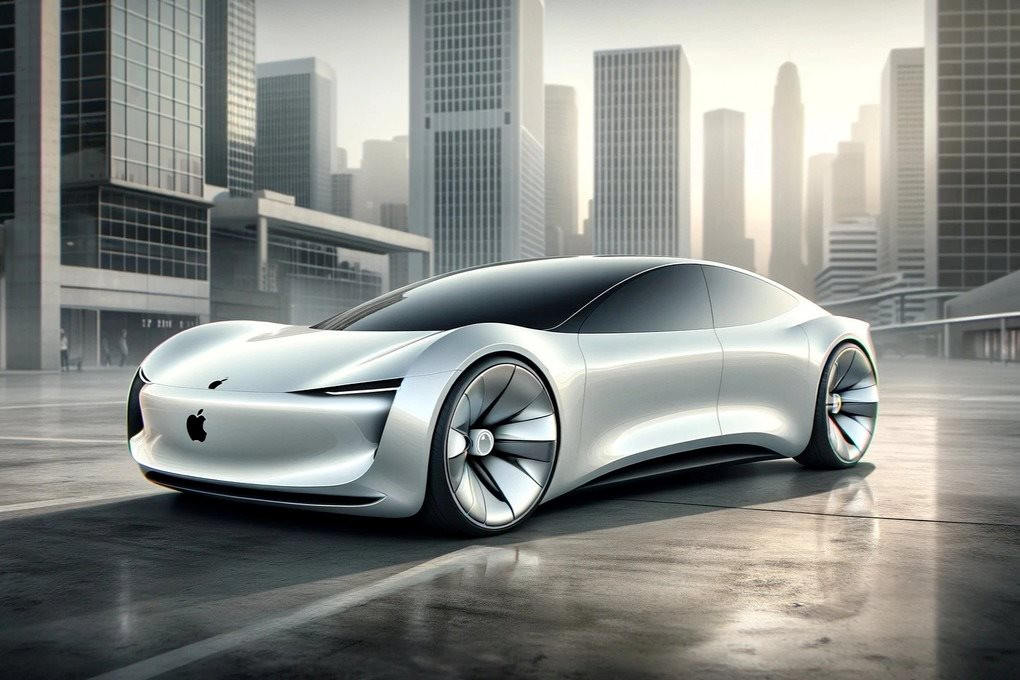
Apple has spent 10 years and more than $10 billion on its car production project.
Over the past decade, many Apple employees have worked on the company’s secret project, internally code-named Titan, which they nicknamed “Titanic.” They knew the project was destined to fail.
Throughout its existence, the car production effort has been halted and restarted multiple times, resulting in the dismissal of hundreds of staff. The project began with the aim of producing an electric car that would compete with Tesla, but then morphed into a self-driving car to compete with Google’s Waymo, a result of the “struggle” between Apple’s leadership.
On February 27, the project directors announced internally that the project had been officially cancelled, and many team members were reassigned to other AI projects.
Apple “burned” more than $10 billion on the sales and project was bankrupt.
Troubled Beginnings – Wrong Turn
The collapse of the car project is evidence that Apple has struggled to develop new products since the death of Steve Jobs in 2011. The project has seen the involvement of four different leaders and multiple layoffs, but ultimately failed due to the difficulty of developing software and algorithms for an autonomous car.
“When the project started in 2014, the “stars” were recruited to create something that only Apple could do,” said Bryant Walker Smith, Assistant Professor at the University of South Carolina School of Law and Engineering.
This was also the time when Google began testing self-driving cars on public roads in California. The entire Silicon Valley spoke out, affirming that self-driving cars would soon become commonplace. Apple didn’t want to be left behind.
At that time, the company also faced pressure from its top engineers regarding the next project, according to three people familiar with the project’s origin. They had just completed the Apple Watch and were eager to start something new. Apple CEO Tim Cook approved the project as a way to prevent engineers from leaving Apple to join Tesla.
Apple also needed to find new ways to expand its business. They predicted that iPhone sales would slow down, while the automotive industry was worth $2 trillion and could benefit Apple – at that time a company worth nearly $200 billion.
According to six employees familiar with the project, despite receiving trust from CEO Tim Cook, they knew they would have to face a harsh reality. If released, an Apple car could cost at least $100,000 but still produce much lower profitability than the iPhone and AirPods. It would also be launched after Tesla dominated the market.
The company even held discussions with Elon Musk about acquiring Tesla. But in the end, they decided that producing their own cars would make more sense than buying and merging with another company.
Those familiar with the project said that from the beginning, there were problems. Steve Zadesky, the original leader of the project, wanted to create an electric car that would compete with Tesla, while Design Director Jony Ive wanted to pursue a self-driving car.
Apple, with $155 billion in cash at the time, spent a lot of money hiring hundreds of experienced machine learning, AI, and other tech experts to create a self-driving car. This was also one of the first big projects that Apple developed with so many outsiders, who were not familiar with the company’s culture.
10 Years “Tilling the Road”
The team, consisting of over 2,000 employees to date, includes engineers who have worked for NASA and developed racing cars for Porsche. They have developed a series of new technologies, such as windshield displays that can show directions or polymer sunroofs to reduce heat from the sun. To boost morale, a series of Apple “stars” such as Jony Ive and Bob Mansfield, who heads the Mac computer development team, also participated.
The company acquired several startups to join the car development team. In 2021, they even appointed Kevin Lynch, the person behind the success of the Apple Watch, to lead the car development team.
Ive and his team envisioned a car with a series of windows and a curved roof. It had no steering wheel and was controlled by Apple’s virtual assistant Siri.

This is one of the visions of many people for the Apple Car.
One gloomy day in 2015, Jony Ive and Tim Cook met at the project headquarters in Sunnyvale, California, to demonstrate how the car would work. The two men sat in seats like those in a cabin. Outside, a staff member read a script of what Siri would say when interacting with the two guests on the road.
However, by 2016, the car production efforts faced difficulties. Zadesky left Apple, and his replacement Mansfield told the working team that they would shift the focus from car manufacturing to building self-driving car software.
Apple obtained a permit from California to begin test driving Lexus vehicles equipped with their software and sensors. They also held discussions with BMW, Nissan, and Mercedes-Benz before reaching an agreement with Volkswagen to provide Transporters as self-driving shuttles on the Apple campus.
Two other leaders then made efforts to take over and develop the project further. Doug Field, former director of Tesla, dismissed more than 200 employees as he worked to build the self-driving system. He later reversed all plans and returned to the original idea of building an electric car.
Earlier this year, Apple decided to spend time and money developing AI instead of a 10-year-long directionless car. In interviews with the New York Times, people who worked on the project praised Apple’s decision, believing that the AI technology behind it could bring tremendous value to the company’s iPhone business.
Some of the basic technologies they developed will still “survive” after the Titan project’s “death.” With the project staff, some have been transferred to AI-related projects. The remaining people were informed that they would be eligible to apply for other roles within the company.
Source: NY Times












